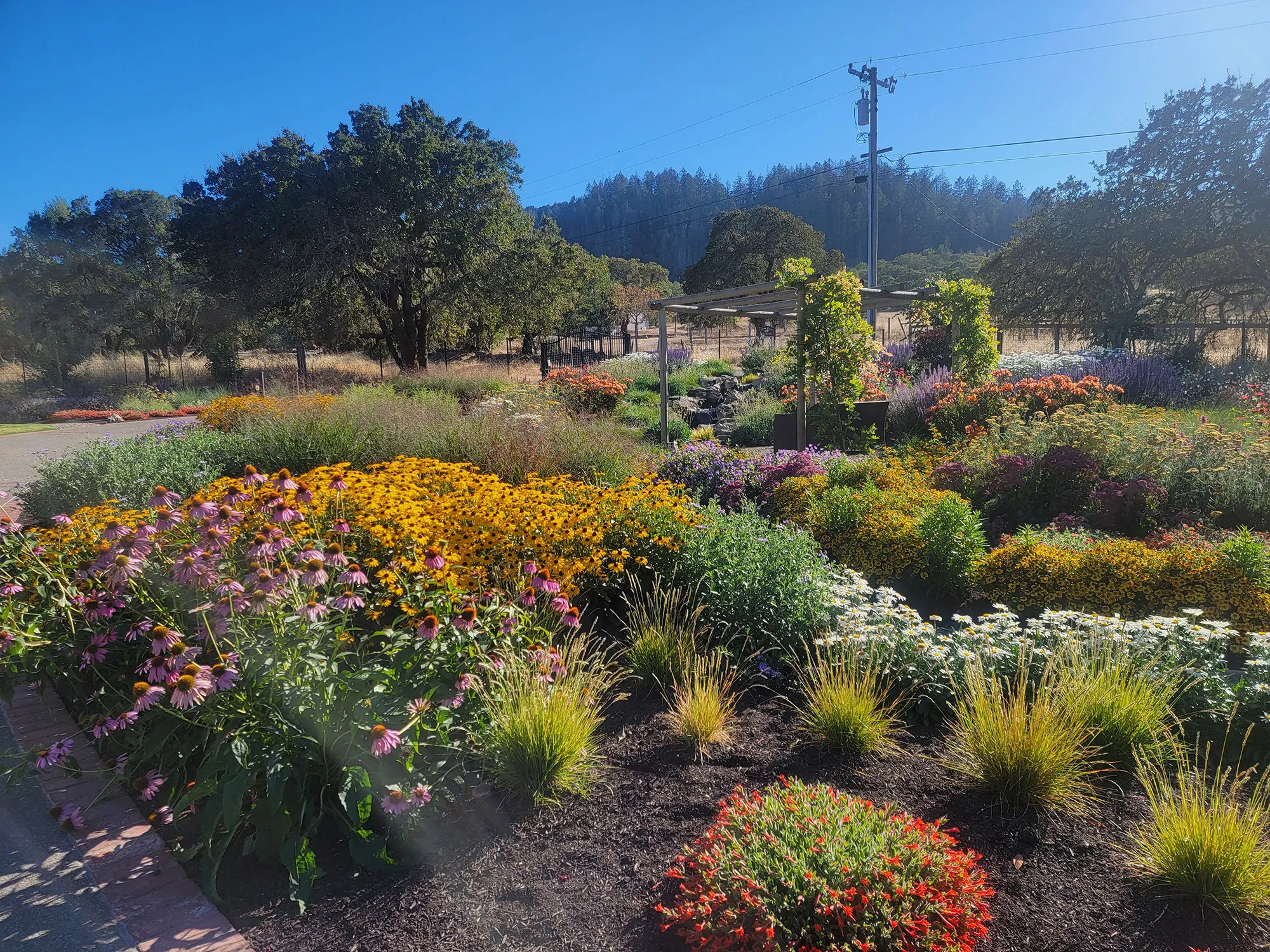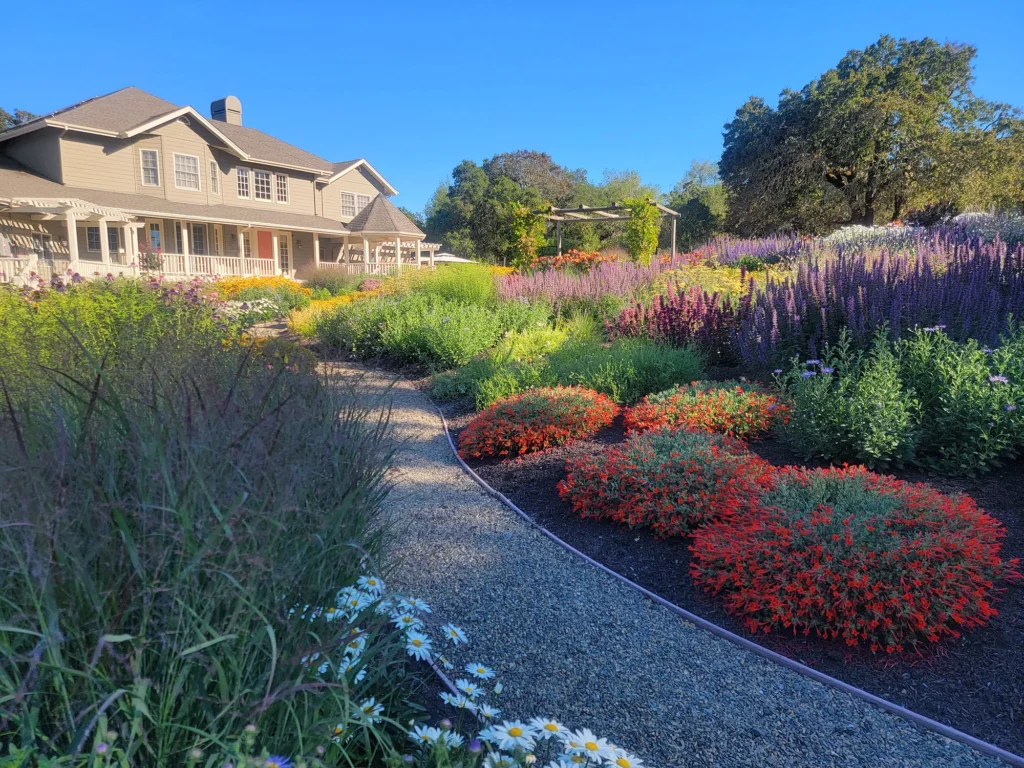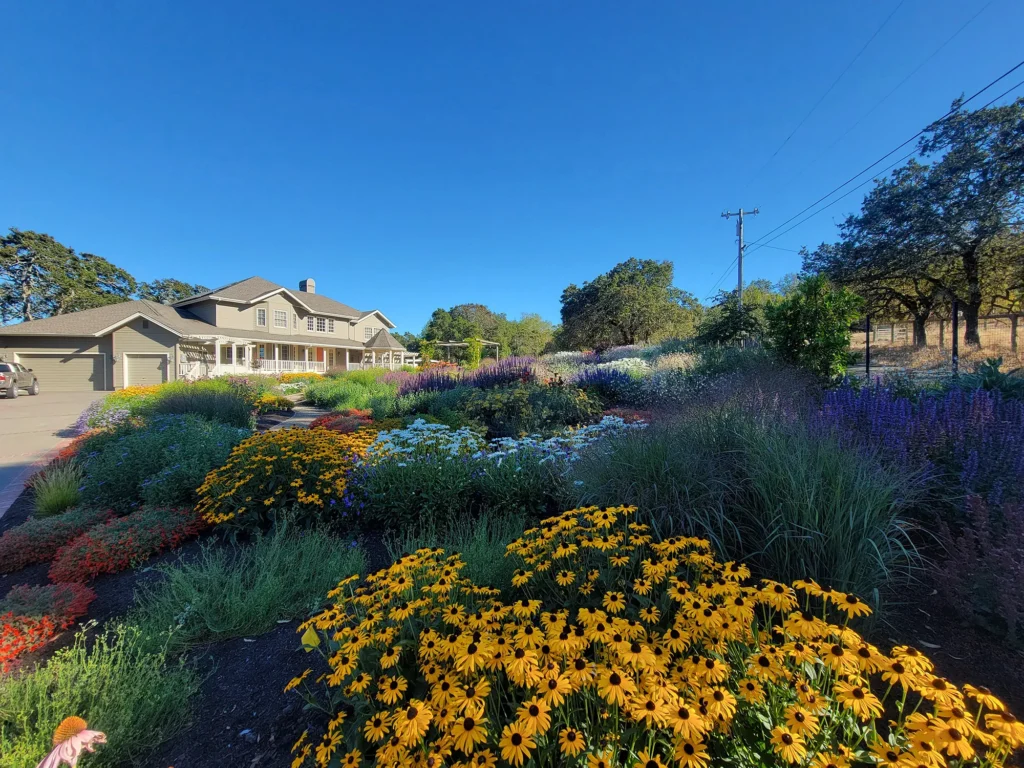
Notes from designer and Landscape Manager – Matt Ripley
When we first met, these clients were deeply dissatisfied with a design and installation which had been completed just a couple years ago. The plants never grew much, always looked sickly, weeds took over and the design lacked color and imagination. After multiple failed attempts with new designers, they reached out to us as landscape design consultants and we embarked on a journey to create a perennial paradise akin to Coursey Graves Winery, where I designed an award winning landscape two years prior, and one which they had recently become enamored with during a wine tasting. Primary goals included bringing pollinators to the garden, drought tolerance, minimal-maintenance flowering plants, and utilizing some existing landscape infrastructure such as pathways and lawns.
Plant selections were geared towards attracting hummingbirds, butterflies, and other pollinators which means providing blooms from early spring to late fall with a variety of both pollen and nectar sources. Utilizing theories of plant architecture (varying heights, structure, and texture), repeating yet naturalistic patterns, the ‘Four Season Garden’ approach popularized by Piet Oudolf, and balancing color/textural shapes with the existing contours of pathways and driveway, I wove together a plan which was intended to be show stopping from start to finish but with enough evergreen anchor plants to retain interest during winter months.
As landscape designers in Sonoma County, we know focusing on native plants is essential when creating a drought resistant and low maintenance perennial garden and we tapped many including Epilobium canum (CA Fuschia), Eriogonum fasciculatum (CA Buckwheat), Agastache (Hyssop), Asclepias speciosa (Showy Milkweed), Helenium autumnale (Autumn Sneezeweed), Lepechinia hastata (Baja Pitcher Sage), Salvia sonomensis (Creeping Sage), Leucanthemum (Shasta Daisy), Sambucus (Elderberry), Carex tumulicola (Sedge Grass), Bouteloua (Blue Gamma Grass), Muhlenbergia (Deer Grass), and Achillea millefolium (Yarrow). In addition we selected many climate adapted perennials and shrubs which provide pollen and/or nectar at the appropriate time of year to support a range of pollinators as well as adding dynamic aesthetics to the landscape. This includes succulents such as Aloe spinosissima (Spider Aloe), Calandrinia grandiflora (Rock Purslane), Leucadendron (Conebush), and much more.
First steps included analyzing the soil conditions and found heavy clay with a thin layer of topsoil on top from the previous installation. This led to poor drainage, lack of nutrients, and root rot across the landscape while creating a thin fertile layer for weeds to take over. We brought in a custom blend of organic compost and tilled it deeply into the soil to break up the clay and provide nutrients for roots to reach deep underground. Doing so not only helps plants grow quickly, but establishes heat and drought resilience as deep roots can tap into water well below the surface as the top layers heat up in peak summer months. Compost acts as a slow release fertilizer for many seasons to come while jumpstarting the biodiversity of soil microbes, bacteria, and fungi which are critical parts of a healthy soil food web.
With the soil fully amended we moved onto planting at the end of April, which was a delicate and intensive process to ensure the reality of the landscape replicated the complexity of naturalistic forms illustrated in the plans. We put our knowledge as landscape irrigation specialists in Sonoma County to work by redesigning the existing drip irrigation system to include hydrozones that made sense for plant health and drought resilience. About a month after planting it was clear the process had been a resounding success as plants exploded with growth as another landscape installation in Sonoma County was complete. Within two months the landscape was in full bloom and coated with hummingbirds, Swallowtail and Monarch butterflies, Bees of all sorts as well as birds happy to find a perch on the flowers, grasses, and take a bath in the waterfall. Each week during our landscape maintenance services the liveliness of the landscape was intoxicating and in full glory during early August when our portfolio photos were taken.
This Bennett Valley ‘Perennial Paradise’ is a quintessential example of how as Sonoma County landscape contractors we can use well informed horticultural choices and imaginative design to take a landscape which once seemed unable to grow anything of interest, and transform it into an outdoor environment full of abundance, teeming with life and color in every place you look.























